VANCOUVER — Eric Desaulniers, president and CEO of Nouveau Monde Mining (TSXV: NOU; US-OTC: NMGRF), reckons that lithium explorers aren’t the only ones that stand to benefit from Tesla Motors (NASDAQ: TSLA), Volkswagen and other automakers’ mandates to ramp up electric vehicle production — graphite producers could also get swept along for the ride.
From his office in L’Ange-Gardien, Que., Desaulniers tells The Northern Miner during a phone interview that although graphite is largely used in steelmaking, it’s also vital for the lithium-ion batteries that carmakers use to power their electric vehicles.
“Historically, the price of graphite follows the iron ore price, but instead of collapsing over the last few years, graphite prices drifted down slowly and stayed flat,” he says. “Graphite in lithium batteries used to account for 9% of graphite demand, and now it’s grown to 25% … which has kept the graphite price steady relative to iron ore.”
Desaulniers says that Nouveau Monde aims to produce by 2021 at its Matawinie graphite property, 130 km north of Montreal, with the intention to become a leading graphite supplier for North America’s burgeoning lithium-ion battery market.
The property is located 120 km east of Imerys Graphite & Carbon’s Lac des Îles mine, the only producing graphite mine in North America. The open-pit operation has been active since 1989, and produces between 20,000 and 25,000 tonnes graphite per year.
“We set out to find something similar to Lac des Îles simply because they have only four or five years of production left,” Desaulniers says. “Our goal is to make ourselves out to be an attractive target for Imerys, or their 100 customers that will specifically want the same kind of graphite.”
Nouveau Monde recently delivered a preliminary economic assessment on Matawinie’s West Zone deposit, which has in-pit resources of 22.3 million indicated tonnes of 4.3% graphite and 15.5 million inferred tonnes of 4.6% graphite, using a 2.5% graphite cut-off.
The study envisages a 28-year mine life, producing 50,000 tonnes of graphite annually at 97.1% purity. Based on an average sales price of US$1,492-per-tonne graphite, the after-tax net present value for the project, at an 8% discount rate, stands at $237 million, whereas the after-tax internal rate of return is 24.7%.
Capital expenses for the project are estimated at $145 million, including a $22-million contingency, whereas operating costs ring in at $660 per tonne graphite.
The deposit is located along the western edge of a 14 km long, circular-shaped geophysical conductor within highly metamorphosed sedimentary rocks bordering a magmatic pluton.
The company has identified two other deposits along the anomaly: the South-West zone and South-East zone. Total resources for the southern zones stand at 26.3 million indicated tonnes of 3.7% graphite, and 19.2 million inferred tonnes of 3.7% graphite, using a 2.5% graphite cut-off.
“This is probably one of the biggest graphite deposits in North America, and if we kept drilling we could increase it,” Desaulniers says. “But we decided that the West Zone is more economic, and the southern zones could be part of the mine’s ‘pension plan.’”
Graphite comes in two forms: natural graphite from mines and synthetic graphite from petroleum coke, with 70% of global supply sourced from China.
But Desaulniers says not all forms of graphite are created equal or used for the same purpose.
For example, a Benchmark Mineral Intelligence report states that flake graphite constitutes 45% of global supply, used mostly in lithium-ion batteries and other green technologies because of its unique properties.
The product can be sold at different prices depending on the size and purity of the flake, ranging from US$2,308 per tonne for “jumbo” flakes to US$1,198 per tonne for “fine” flakes, which are over 50-mesh and under 100-mesh in size.
“After all these years, Lac des Îles is still one of the most profitable mines in Quebec because of its large-flake size and high purity of the carbon. Because of that they’ve created their own niche market and were never in competition with the Chinese,” he adds. “What we have is basically the same thing — our graphite has 97% purity, so we have premiums in all the different graphite products.”
According to Benchmark’s report, Tesla’s US$5-billion Gigafactory in Nevada could require up to 129,000 tonnes of flake graphite per year, assuming 40 kilograms of flake graphite is used per 24 kilowatt per hour of battery power.
Another 551,000 tonnes of flake graphite could also be on order for Volkswagen, as the company plans to produce 30 electric-powered vehicle models by 2025, and sell 2 to 3 million of them per year, the report states.
Desaulniers says the carmakers have a preference for local, green graphite sources, which is why Nouveau Monde plans to include Matawinie’s carbon footprint in the project’s pre-feasibility study, due early next year.
“Nobody else quantifies the operation’s carbon footprint in their studies, but for us and Tesla, it’s really important to demonstrate that we’re green and carbon neutral,” he says. “At the property, we have easy access to hydroelectric power, public roads and existing infrastructure, and we’re close to potential customers, which are all strong advantages for an operation with a low environmental footprint.”
Nouveau Monde is working towards developing a metallurgical flow sheet for producing spherical graphite — a value-added finished product that lithium-ion batteries require for anode material.
“You need to bend the flake and make it into a dense ball of graphite that has the exact shape and density the batteries require,” he says. “Outside China there’s no production of spherical graphite, so we believe the next big thing for us is to master this process and make the final product at the mine ourselves.”
He also reckons that graphite mining in Quebec is gaining a lot of attention and support from both local and federal governments. He notes that Canada’s Prime Minister Justin Trudeau recently spoke at a conference in Montreal about his government’s priority to make Quebec’s electric vehicle industry — from rock to finished product — much like its aerospace industry.
“Just last year we went from nobody to having one of the largest deposits in North America that now demonstrates very good economics,” Desaulniers says. “So we see ourselves as being part of something greater to come.”
He notes that Nouveau Monde has $2.6 million in cash — enough to complete this year’s 6,000-metre drill program, which will upgrade more of the West Zone’s resource into the indicated category, in preparation for the project’s prefeasibility study.
He notes that 30% of the company’s shares are held by government-funded organizations and Quebec-based institutions such as Sidex, Le Fonds de solidarité FTQ, Sodémex and the Canada-wide Desjardins Group.
He adds that the company is in “no rush” to seek out financing, but will look to raise another $10 million within the next year, which should take the project through a feasibility study.
Shares of Nouveau Monde have traded within a 52-week range of 12¢ to 38¢, and closed at 30¢ at press time. The company has 64.4 million shares outstanding for a $20-million market capitalization.

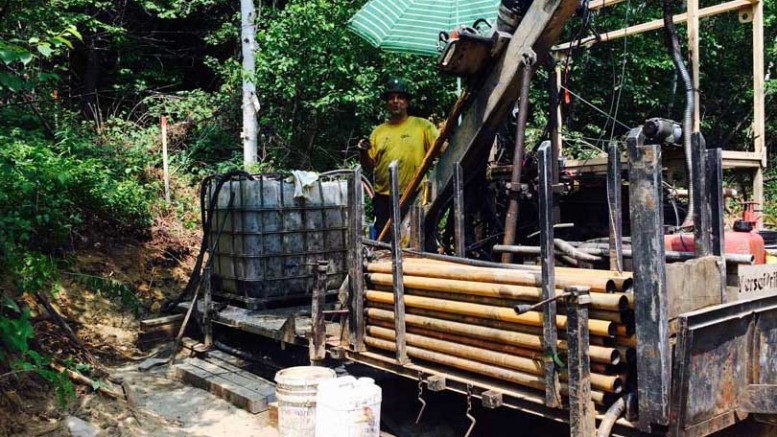
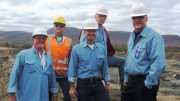
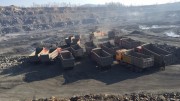
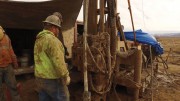
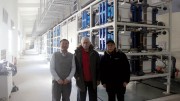
Be the first to comment on "Nouveau Monde outlines economics for Matawinie"